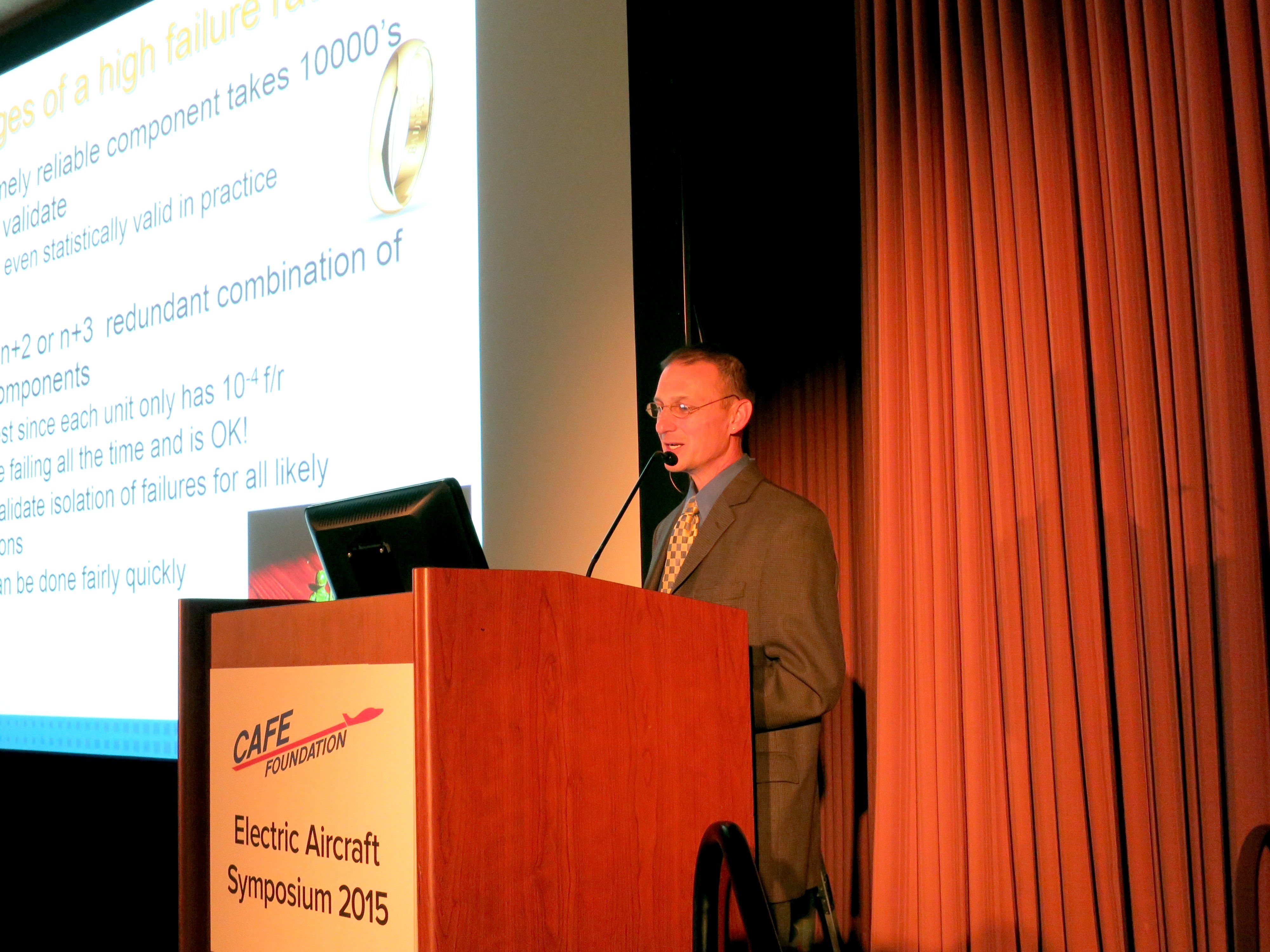
With few moving parts compared to an aircraft piston engine, electric motors are thought to be far more reliable. But when the systems that control them are factored in, the reliability picture is far less rosy, according to Mike Ricci, who says electric propulsion in general has some distance to cover before it will be reliable enough to impress regulators approving electrics for commercial service.
Speaking at the Electric Aircraft Symposium in Santa Rosa, California, this week, Ricci, whose company, LaunchPoint Technologies, studies reliability in complex systems, showed how the various components in electric aircraft—controllers, wiring and battery systems—have failure rates that might contribute to reducing the overall reliability of the airplane to less than that of a more mature piston model. “These electric systems are actually far more complex than the piston systems,” Ricci told AVweb in this exclusive podcast. “The electrical systems have hundreds of thousands of components that aren’t just a chunk of machined steel, but they’ve got silicon layers that were grown in a fab, die bonded onto a substrate and a circuit board. Each of those has a failure rate and when they’re all added up, it can result in a not-so-reliable overall system,” Ricci said.
The challenge for electric aircraft manufacturers will be to improve reliability to the same levels delivered by modern commercial aircraft and Ricci says one way of doing that is to follow the lead of Boeing, Airbus and others who have built unprecedented reliability into fly-by-wire systems. Ricci calls this approach applied to electrics as “propulsion by wire.”
Ricci says current electric technology is delivering reliability in the 10-4 to 10-5 range; about the same as piston engines. “Then you have to chain the battery in and you add a couple of 10-5s together and you’re very close to 10-4,” he says.
“The cool thing is there is an example in industry out there of how to do that and that’s fly by wire. It uses a parallel redundant system and it’s called redundancy management and failure isolation. It’s a very highly engineered and complicated system, but it’s what we’ve come to count on when flying across the country,” Ricci says. These systems deliver 10-9 rates, or one failure in a billion—100,000 times better than a piston engine. Ricci says even though individual components may have low times between failures, they’re backed up and paralleled with enough systems to elevate composite system reliability. “If we follow that kind of example, we can do the same in electric propulsion,” Ricci says.
Ricci supports an increasingly common philosophy in electric aircraft design: distributed power to multiple thrust units instead of reliable power to a single-point failure of a rotor or a propeller. “There are reasons not to have too many rotors, but my vision is to have several rotors so you have enough of them that if one fails, you can keep flying,” Ricci says. Each might have its own power source and controller interconnected with electronically controlled busses. Of course, redundancy increases complexity, cost and weight, but that’s how reliability has typically been engineered into transport systems of all kinds.


































